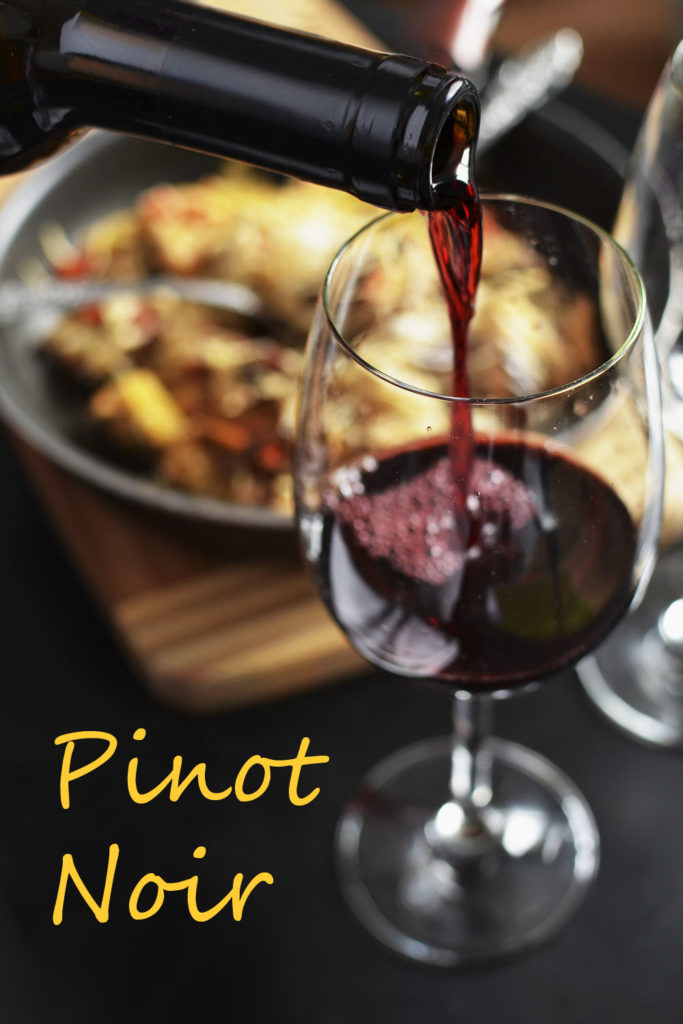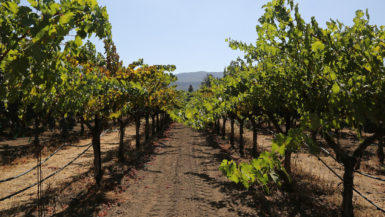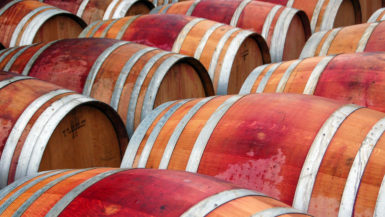It’s basically impossible to put into words how sublime and uplifting a quality Pinot Noir can be.
One of the things that makes the wine and culinary worlds as odd and wonderful as they are is the fact that they’re the Venn diagram of the intersection of art and science.
While food is a necessity, wine is more what one might call a necessary luxury. There are underlying scientific rules determining what makes wine and food more or less enjoyable. We could argue all day about what flavors and textural details make this dish or that bottle more or less attractive to us personally. However, very few people are going to argue in favor of a bitingly acidic wine with a 2.1 pH. Certain quality standards exist for a reason.
The craft that goes into winemaking, and the subjective nature of the individual drinker’s experience, is where wine ventures into the world of art. I’ve said it before: Beer is punk rock—constantly reinventing itself and pushing boundaries. Wine is classical music—new artists interpreting old compositions. However, some famously difficult compositions have a magnetic pull for the musician yearning for a challenge. By that same token, the finicky nature of Pinot Noir and the challenges it presents as a varietal are a siren call to certain kinds of winemakers.
Posts may contain affiliate links, so if you click an affiliate link and/or buy something you’ll support this blog and I’ll make a little money, at no cost to you. If you really care, you can read our full legalese blah blah blah.
Pinot Is a Lighter, Subtler Wine
If you’ve watched any of our videos, you’re probably aware by now that Warren isn’t a fan of Pinot Noir. One of the reasons I like drinking wine with Warren is that he’ll always give something another shot if he runs across it as a tasting. So it’s not like he hasn’t tried his fair share of Pinots. However, the gutsiness and intensity of both flavor and body that one might get from Cabernet Sauvignon and Shiraz just isn’t present in a Pinot. That makes it a turn-off for quite a few fans of heavy red wines.
In fact, I would argue that the times that I’ve had a gutsier and heavier Pinot Noir, it suffered for the fact. It usually meant that it had spent too long on the vine. Its acidity dropped and made it into a low-rent, second-rate version of Grenache.
Harry Waugh once said that a wine’s first duty was to be red and its second duty was to be Burgundy. Pinot Noir is one of those grapes that can remind even the most jaded connoisseur of why they started liking wine. Most of my experience with Pinot Noir has been on the American side rather than the French side. But there have been quite a few Russian River and Willamette Valley Pinots that really made me stop and pay attention to what was in my glass.

The Subtle Symphony of Pinot Noir
Often there’s a bracing aromatic overtone of cordite or gunsmoke, startlingly similar to the smell in the air after a fireworks display. Repeated swirling brings about aromas of fresh red berries and subtle floral notes, often violets, as enticing as they are unexpected in the aftermath of the smoky beginning. Pinot Noir is famously low in tannin. However, when the acidity is at a proper height, they can achieve a medium-bodied feel. There’s usually a good amount of tart fruit character; cranberry and currant flavor components are common, as are wild cherry and raspberry.
Even writing this out, though—none of these descriptors really do a well-made Pinot Noir justice.
Pinot Is Hard to Grow
Perhaps what feeds the Pinot mythos is that it really is a hard grape to grow. Its cluster shape and size make it susceptible to rot, molds, and fungi. Its thin skins present viticultural drawbacks as well. While site selection is important for all grape varietals and vineyards, it’s especially important for Pinot Noir. It really does best in cooler mesoclimates that have good wind exposure. In the land of the blind, the one-eyed man is king. Perhaps in the land of the finicky grape, the well-made wine is transcendent.
There’s an oft-quoted passage that writing about music is like dancing about architecture. The same could be said about wine. It’s basically impossible to put into words how sublime and uplifting a quality Pinot Noir can be.
For me, knowing how temperamental and difficult the grape is makes me enjoy such a wine more. It’s not that any grape is particularly easy to grow. Vineyard managers the world over have to deal with a host of concerns, from birds to yellow jackets to raccoons to hailstorms. However, knowing that some team of people was able to bring you a soul-satisfying Pinot Noir is like knowing that someone ran a marathon to bring you an amazing latte. The effort is made all the more amazing by the quality, and vice versa.
What to Pair with Pinot Noir
One of the things that makes Pinot fun is that it has somewhat more versatility than other red wines when it comes to food pairings. Neapolitan cuisine can work quite well with it, due to its relative lightness and lively acidity. If you’re looking for a wine that can pair with clams or mussels in a red sauce, a red Burgundy or a Willamette Pinot is a lovely choice. It’s also a red wine that can work well with white meats, such as turkey or Cornish game hen. I often bring some form of Pinot home for family Thanksgiving—and the right one can serendipitously make a flavor pairing combination with cranberry sauce as well.
Younger American Pinot Noir rarely needs decanting. But some older French Burgundies can benefit from the process, as is the case for most bottle-aged red wines.
Warren and I often say that the best wines are the ones you like. Know your own palette. If you’ve tried quite a few Pinots and they weren’t for you, then by all means don’t subject yourself to them unnecessarily. However, if you haven’t tried many, or want to give them another shot, I really recommend going to a local wine bar or wine store and asking them for their recommendations. Good Pinot Noir usually costs more, pound for pound, than other wines. But sometimes it’s worth that extra to remind ourselves just why we call ourselves wine lovers in the first place.
Buy some of these (or other) wines at Vivino and get 20% off with code WINELOVERSCU20 (first-time buyers in the US).
Questions? Want to tell us your favorite Pinot Noir? Leave a comment below!







Leave a reply